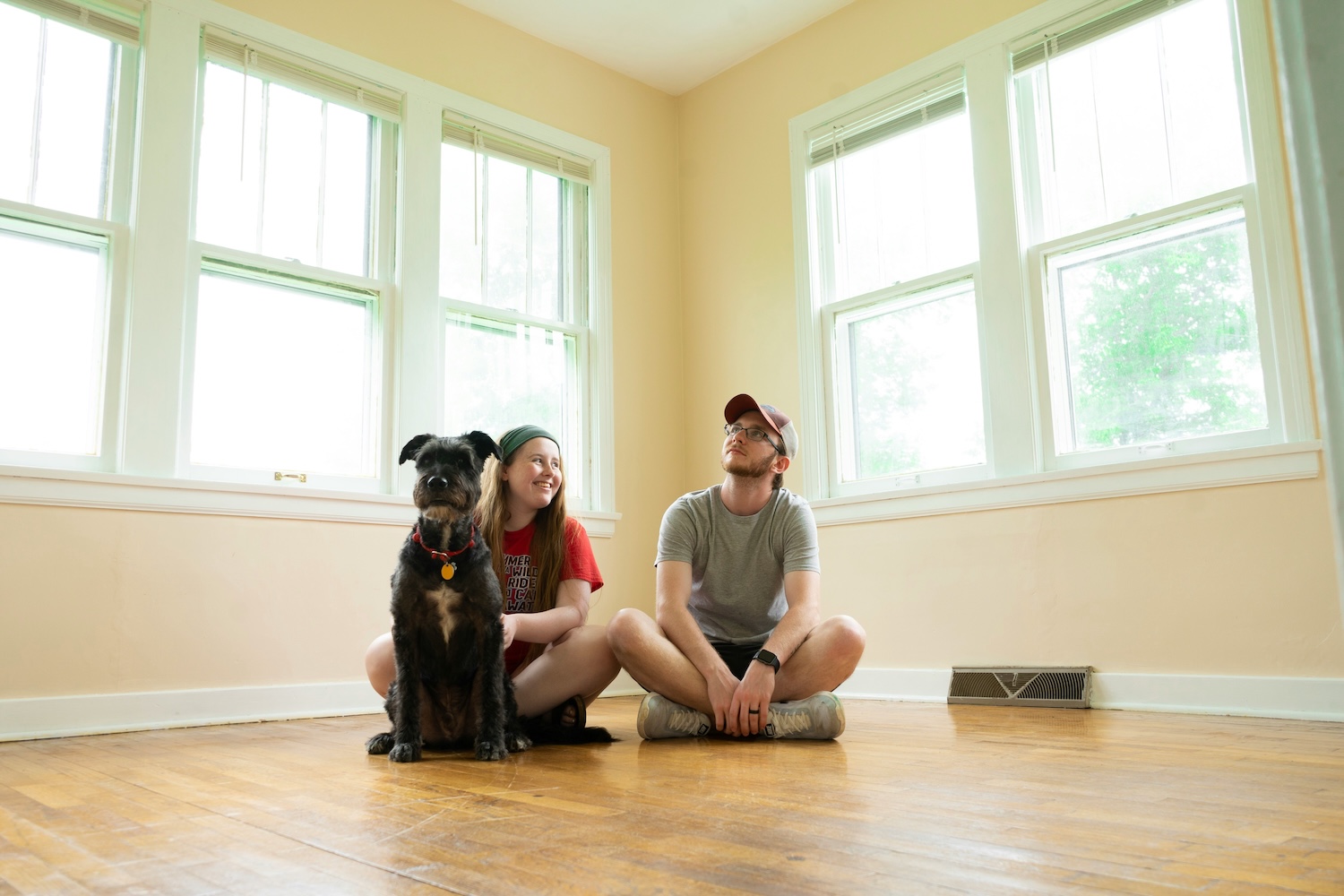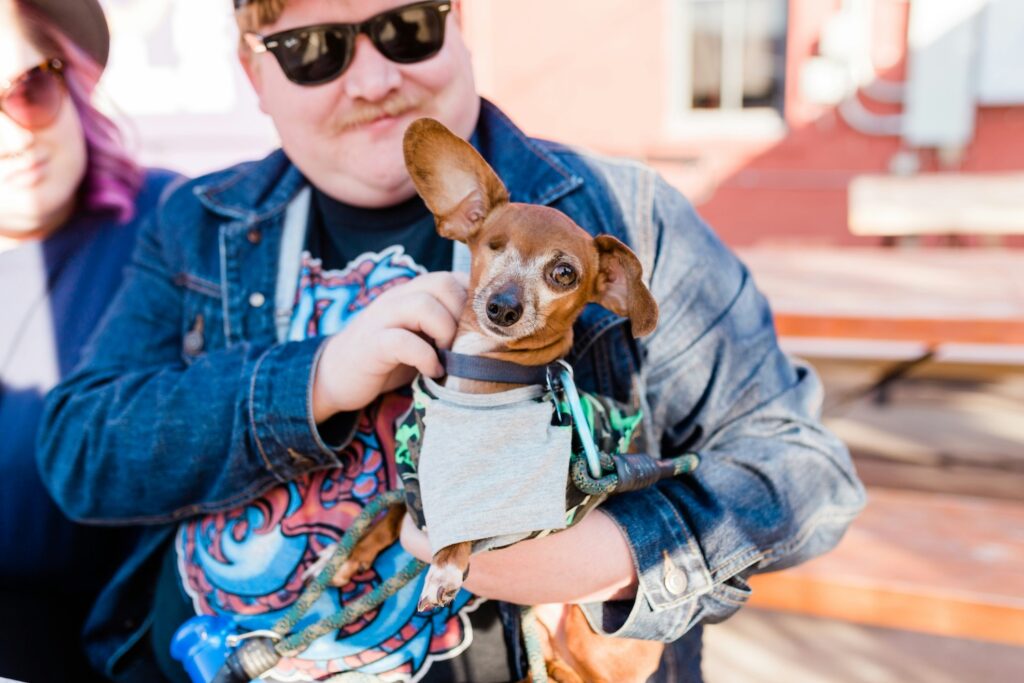Three days after moving, your usually confident dog is still hiding under the kitchen table, refusing to eat properly and jumping at every unfamiliar sound. You thought they’d bounce back by now, but instead, they seem more anxious than ever.
I’ve watched countless people with dogs navigate relocations, and the pattern is always the same: the humans focus intensively on the logistics while their dog’s needs become an afterthought. Then moving day arrives, and suddenly there’s a stressed, confused animal in the middle of chaos, making an already complex situation even more challenging.
The research on canine stress during environmental transitions tells us something crucial: dogs don’t just “bounce back” from major disruptions the way we might hope. Their stress response can persist for weeks or even months after a move, affecting everything from sleep patterns to territorial confidence to their relationship with you.
But here’s what I’ve discovered through years of digging into the science: there’s a systematic approach that can dramatically reduce the stress of moving for both you and your dog. It takes two weeks of preparation, but the difference it makes is profound.
What to Expect During a House Move
Moving triggers what researchers call “environmental displacement stress” in dogs. Unlike the temporary stress of a vet visit or a thunderstorm, relocation disrupts every aspect of your dog’s established territory and routine simultaneously.
Dr Sarah Ellis’s work at the University of Lincoln shows that dogs experience measurable cortisol elevation that can persist for three to six weeks after a move. But here’s the crucial part: dogs whose people followed systematic preparation protocols showed cortisol levels that returned to baseline 40% faster than those who experienced sudden displacement.
Your dog’s stress response during a move isn’t just emotional, it’s neurobiological. When their familiar environment disappears, their hypothalamic-pituitary-adrenal axis activates, flooding their system with stress hormones. This affects their ability to learn, their sleep quality, their appetite, and their confidence in new situations.
Timeline expectations are crucial for your sanity: Most dogs show appetite normalisation by day five to seven, but territorial confidence typically takes three to four weeks to develop. Sleep patterns usually stabilise within the first week, while full comfort with neighbourhood sounds and routines develops over four to six weeks.
You’ll likely notice changes in your dog’s behaviour during this period. Some become clingy and anxious, others withdraw or become reactive to things that never bothered them before. These aren’t personality changes, they’re normal responses to environmental upheaval that resolve once they feel secure again.
The Two-Week Preparation Framework
The research consistently points to one truth: preparation time matters enormously. Dogs who experience abrupt environmental changes show more persistent stress markers than those given time to adjust gradually. Two weeks gives you enough runway to implement the protocols that make the difference.
Week One: Foundation Setting (Days 1-7)
Day 1-2: Create Your Dog’s “Comfort Kit”
Start by gathering items that carry your dog’s scent and positive associations. This isn’t about grabbing their favourite toy; it’s about strategic scent preservation. Studies by Dr Alexandra Horowitz demonstrate that familiar scent markers reduce cortisol response by up to 25% in novel environments, making this protocol neurobiologically sound, not just sentimental.
Collect their bedding (don’t wash it), well-worn toys, and any fabric items they regularly interact with. Add one of your worn t-shirts to the collection. This becomes their “comfort kit” that travels with them and gets established in the new space first.
Day 3-4: Begin Routine Modifications
If your current routine won’t work in the new location, start adjusting now. Change walk times, feeding locations, or exercise patterns gradually. The goal isn’t to match your future routine exactly, but to demonstrate that routine changes don’t mean their world is ending.
Evidence from the University of Bristol found that dogs who experienced gradual routine changes during the week before moving showed 35% less displacement behaviour than those whose routines changed abruptly on moving day. This preparation literally rewires their stress response to change.
Day 5-7: Scent Soaking the New Space
If possible, visit your new home with items from your dog’s comfort kit. Leave a worn t-shirt and their bedding in the space where they’ll sleep. This “scent soaking” protocol helps establish familiarity before they arrive because dogs navigate primarily through olfactory information rather than visual cues.
If you can’t access the new property, practice this routine with boxes and moving supplies in your current home. Let your dog investigate packing materials and moving boxes when they’re calm, creating positive associations with the objects that signal change.
Week Two: Transition Preparation (Days 8-14)
Day 8-10: Pack Strategically
As you pack, maintain your dog’s routine as much as possible while helping them adjust to the changing environment. Keep their food, bedding, and essential items accessible until the last possible moment.
Create a “first day box” that travels with you in your car, not the moving truck. This contains three days’ worth of food, medications, their comfort kit, waste bags, and any essential documentation. Research indicates that having familiar resources immediately available reduces transition stress by providing environmental anchors during chaos.
Day 11-12: Practice Car Travel
If your move involves a long car journey, do practice runs now. Start with 30-minute drives, gradually increasing duration if needed. This prevents car travel from adding another stressor to moving day.
For interstate moves, research your route for dog-friendly stops and accommodation options. The RSPCA Australia travel guidelines recommend stops every two to three hours for exercise and water breaks.
Day 13-14: Final Preparations
These last days focus on your own stress management, which directly affects your dog. Studies consistently show that dogs mirror their person’s cortisol levels during stressful events, making your calm confidence their security anchor during upheaval.
Confirm all logistics: removalist schedules, utility connections, and any required documentation for rental properties. In Australia, you’ll need to provide pet bond information and often proof of pet insurance for rental properties.
Managing Moving Day
Moving day is when all your preparation pays off. Data from the Animal Behaviour Research Group at Oxford shows that dogs whose people followed systematic protocols experienced 50% less cortisol elevation on moving day itself.
Morning Routine
Start the day normally. Feed your dog at their usual time with their regular food in their usual location. Don’t skip their morning routine because of time pressure, it provides crucial stability anchoring when everything else becomes unpredictable.
If possible, arrange for your dog to spend the most chaotic hours of moving day with a trusted friend or family member in a familiar environment. This isn’t about convenience; it’s based on research showing that dogs experience less stress when removed from high-activity environments during major transitions.
If Your Dog Must Stay During the Move
Create a “safe zone” in one room, preferably where they normally spend quiet time. Include their comfort kit, fresh water, and something with your scent. Use baby gates or barriers to clearly define this space for removalists.
Brief your moving team about your dog’s location and any specific needs. Professional removalists are usually experienced with pets, but clear communication prevents accidents and stress.
First Hours in the New Space
When you arrive at your new home, resist the urge to give your dog the “grand tour” immediately. Instead, establish their safe zone first. Set up their bedding, food, and water in the designated area before exploring together.
Let them investigate gradually, staying with them for the first exploration. Your presence signals that this new territory is safe and belongs to both of you.
The First Three Weeks: Understanding Settlement Patterns
The animal rescue community has long recognised the “3-3-3 rule”: three days to decompress, three weeks to learn routines, three months to fully settle. Recent research supports these timeframes while adding more nuance to what “settling” actually looks like.
Week One: Decompression
Expect your dog to be subdued or hypervigilant during the first few days. They might sleep more than usual, eat less, or seem confused about where they’re supposed to be. This is normal decompression, not concerning behaviour change.
Maintain routines as much as possible while being flexible about timing. If they’re used to a 7am walk but seem unsettled in the early morning, try 8am instead. Routine consistency matters more than exact timing during this phase.
Week Two to Three: Pattern Learning
During this period, your dog begins mapping their new territory and learning how this environment works. You might notice them checking doors and windows more frequently, or establishing new “watching posts” where they can monitor activity.
This is when you’ll see their personality returning. Play behaviour resumes, appetite normalises, and they begin showing preferences for specific spots in the new space.
Some dogs experience a “testing” phase during week two or three, where they might challenge boundaries that were well-established in the old house. This isn’t defiance; it’s normal behaviour when territorial understanding is still forming.
Beyond Three Weeks: Full Integration
By week four to six, most dogs have established comfort in their new environment. They’ve learned the neighbourhood sounds, identified safe spaces, and rebuilt their confidence in the territory.
However, some individual variation exists. Older dogs, highly sensitive breeds, or dogs with previous traumatic experiences may need eight to twelve weeks for complete adjustment.
When Australian Housing Realities Complicate Moving
Moving with dogs in Australia often involves navigating rental market pressures and state-specific regulations that can significantly extend your timeline and stress levels. Recent RSPCA data shows that pet-friendly rental properties represent less than 5% of available listings in major Australian cities, making the search process substantially longer and more competitive.
New South Wales: Pet bonds can be charged equivalent to two weeks’ rent, and you’ll need written permission from your landlord before bringing a dog to the property. Some agents require pet resumes or references from previous landlords, adding weeks to application processes.
Victoria: Since March 2020, landlords cannot unreasonably refuse pets, but they can apply to VCAT if they have valid concerns. Allow extra time for application processes and potential negotiations.
Queensland: Pet bonds are limited to two weeks’ rent, but some properties require additional pet insurance or professional carpet cleaning agreements.
South Australia and Western Australia: No specific pet bond restrictions, but individual lease agreements vary widely. Review pet clauses carefully before signing.
Tasmania: Recently introduced stronger tenant rights regarding pets, but implementation varies between properties.
Australian Capital Territory: Has some of the most tenant-friendly pet laws, but rental availability can be limited.
If you’re moving interstate, research quarantine requirements. While most movements between Australian states don’t require quarantine for domestic dogs, some specific situations (particularly involving working dogs or recent illness) might have restrictions.
Individual Variation: Tailoring Your Approach
The research clearly shows that breed characteristics, age, and previous experiences significantly influence how dogs handle relocation stress. Understanding these factors helps you modify the basic framework for your specific companion.
Breed-Specific Considerations
Territorial breeds like German Shepherds, Rottweilers, and Australian Cattle Dogs often take longer to accept new environments but form stronger attachments once settled. These dogs benefit from extended preparation phases and may need up to eight weeks for full territorial acceptance. Consider adding an extra week to your preparation timeline and expect testing behaviours to persist longer.
Companion breeds like Golden Retrievers, Labradors, and Cavalier King Charles Spaniels typically adapt more quickly to new environments, often showing comfort within two to three weeks. However, they may struggle more with separation during the chaotic moving period, benefiting from consistent human presence rather than temporary boarding.
Sight hounds and primitive breeds sometimes struggle with environmental changes due to their strong flight responses, but they often settle well once they’ve identified safe spaces and escape routes. Focus heavily on establishing secure zones and clear exit paths in the new space.
Working breeds like Border Collies and Australian Kelpies may show increased displacement behaviours (excessive digging, herding, vocalisation) during transition. Increase mental enrichment activities during the settling period to channel their energy productively.
Age-Related Modifications
Puppies under six months often adapt quickly due to their developmental flexibility, but they need extra support in maintaining house training routines in new environments. Expect temporary regression and increased supervision needs.
Senior dogs (over eight years) may take considerably longer to adapt due to cognitive changes and increased reliance on established routines. Allow 8-12 weeks for full settlement and consider veterinary support if they show signs of confusion or increased anxiety.
Previous Experience Impact
Dogs with previous positive moving experiences often adapt more easily, showing curiosity rather than stress when environments change. These dogs may need less preparation time, but still benefit from routine maintenance.
Rescue dogs may struggle more with moves due to previous abandonment experiences triggering survival anxieties. These dogs often benefit from maintaining extremely consistent routines during transitions and may require professional behavioural support.
Dogs with trauma histories need modified approaches that prioritise predictability and control. Consider extending preparation timelines and consulting with veterinary behaviourists before major moves.
Red Flags: When to Seek Professional Help
While most dogs settle into new homes within a reasonable timeframe, some warning signs indicate when professional intervention might be necessary.
Seek veterinary or qualified behaviourist support if your dog shows:
- Persistent appetite loss beyond one week
- Sleep disruption continuing past two weeks
- Destructive behaviour not related to boredom or excess energy
- Regression in house training lasting more than two weeks in adult dogs
- Withdrawal or depression lasting more than three weeks
- Increased aggression or fearfulness toward familiar people or situations
- Repetitive behaviours like excessive pacing, spinning, or self-trauma
These signs suggest that normal adaptation processes aren’t occurring and intervention can prevent long-term behavioural issues from developing.
Why This Systematic Approach Works
The research underlying this two-week framework draws from decades of study into canine stress physiology and environmental psychology. When we understand how dogs process environmental changes, we can work with their natural adaptation mechanisms rather than against them.
Dogs are creatures of association and pattern recognition. By maintaining familiar elements while gradually introducing change, we help their nervous systems process transition without overwhelming their stress response systems. This approach literally prevents the neurobiological cascade that creates lasting anxiety around environmental changes.
The scent soaking protocol works because dogs navigate the world primarily through olfactory information. Familiar scents in new environments signal safety and continuity, reducing the neurobiological stress response that makes adaptation difficult. It’s not sentimental, it’s scientifically grounded in how dogs process environmental safety.
Routine maintenance during transition provides what researchers call “environmental anchors”, predictable elements that help dogs maintain emotional regulation even when everything else is changing. These anchors prevent the complete overwhelm that can trigger lasting anxiety patterns.
Most importantly, this approach recognises that moving stress isn’t just inconvenient for dogs, it’s genuinely harmful to their wellbeing if not managed properly. Chronic stress suppresses immune function, interferes with learning, and can create lasting anxiety around environmental changes that affects their quality of life for years.
Your Dog’s New Beginning
Moving house with your dog doesn’t have to be a crisis to manage. With systematic preparation and realistic expectations about settlement timeframes, it can become a manageable transition that strengthens rather than strains your relationship.
The two-week preparation framework gives your dog the time they need to process change gradually, while the post-move settlement understanding helps you support them through the adjustment period without panic or frustration.
Remember that your dog’s stress response mirrors your own. The more confident and systematic you feel about managing their needs during this transition, the more secure they’ll feel navigating the change alongside you.
Every dog settles at their own pace, influenced by their breed, age, previous experiences, and individual temperament. What matters isn’t the perfect execution of every protocol, but consistent support and realistic expectations as they find their place in their new territory.
Your preparation and patience during these crucial weeks creates the foundation for years of contentment in your new home together.



